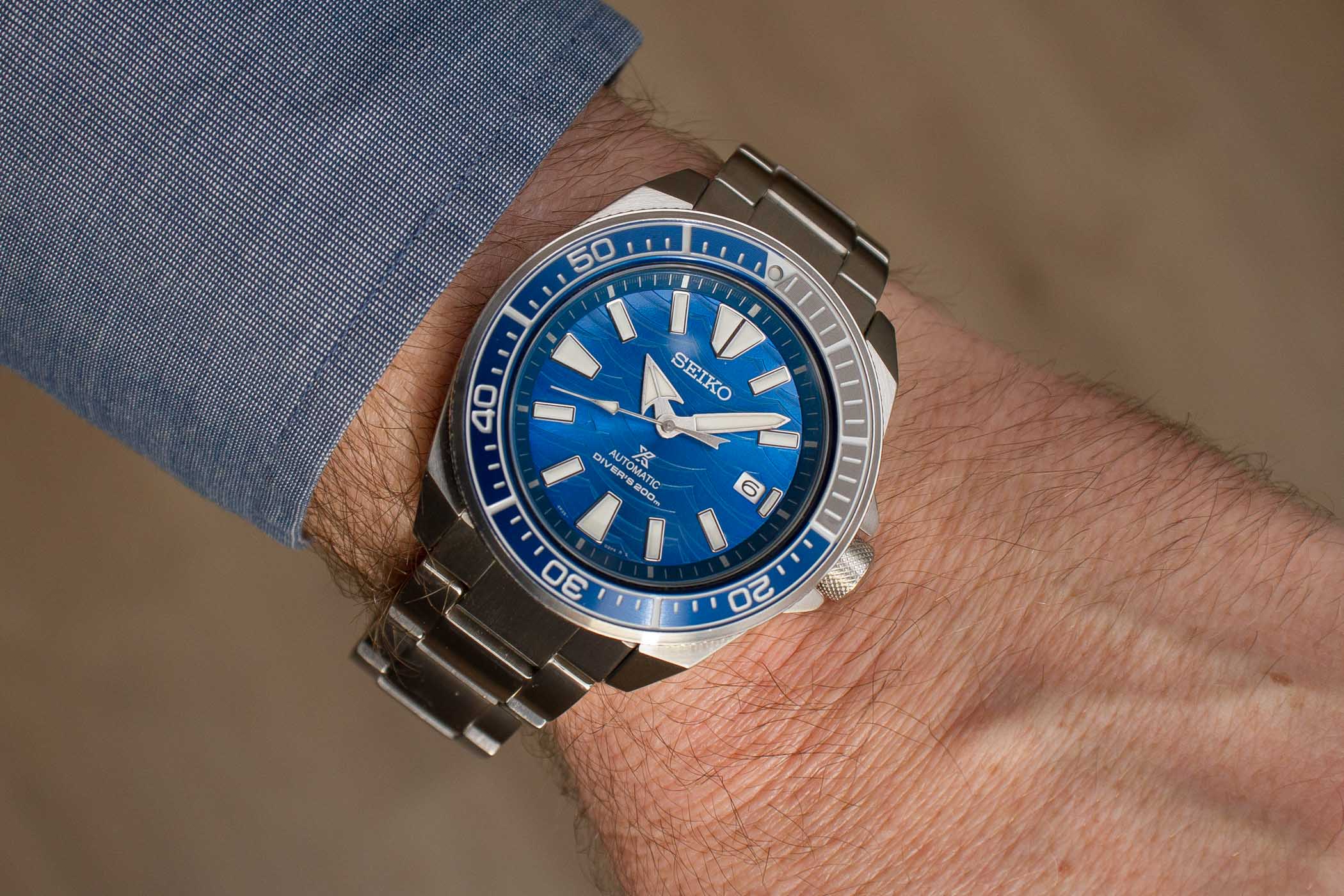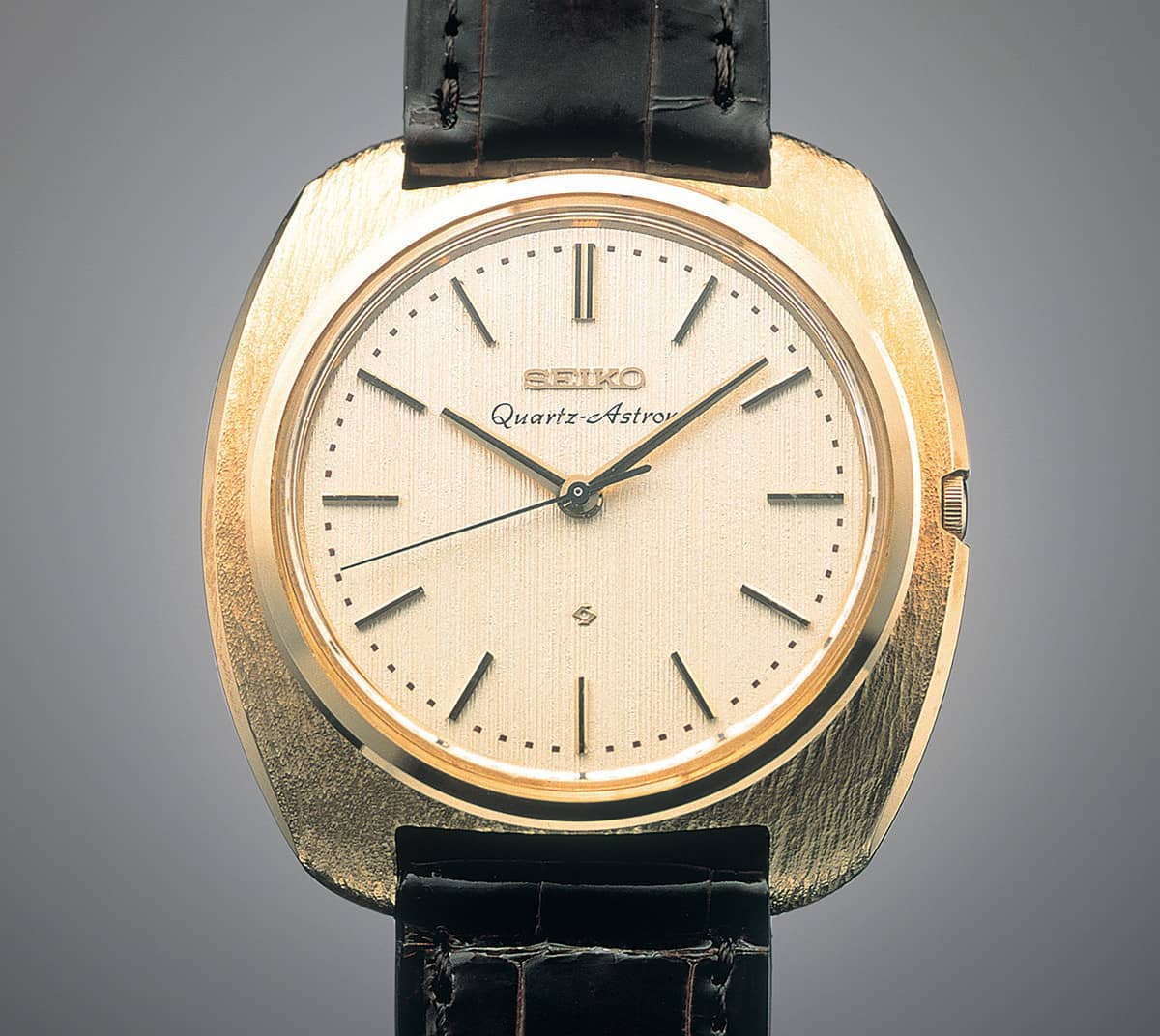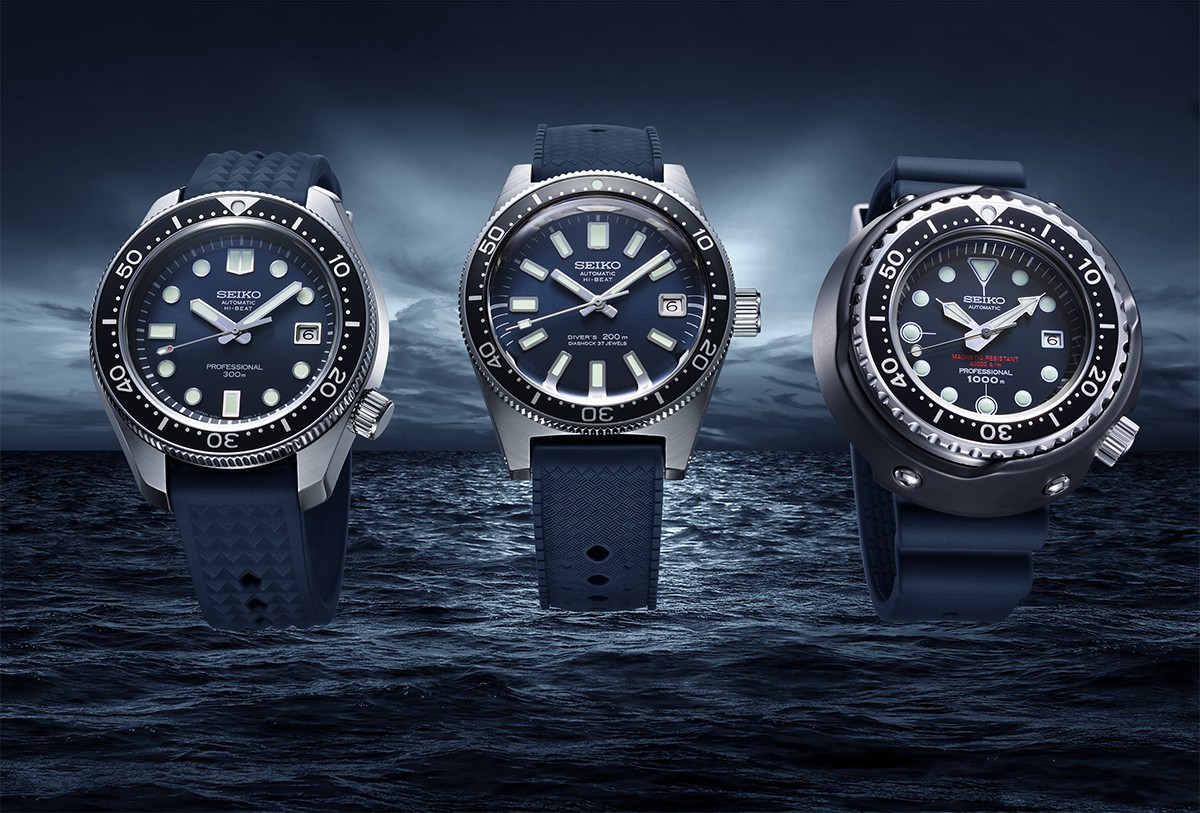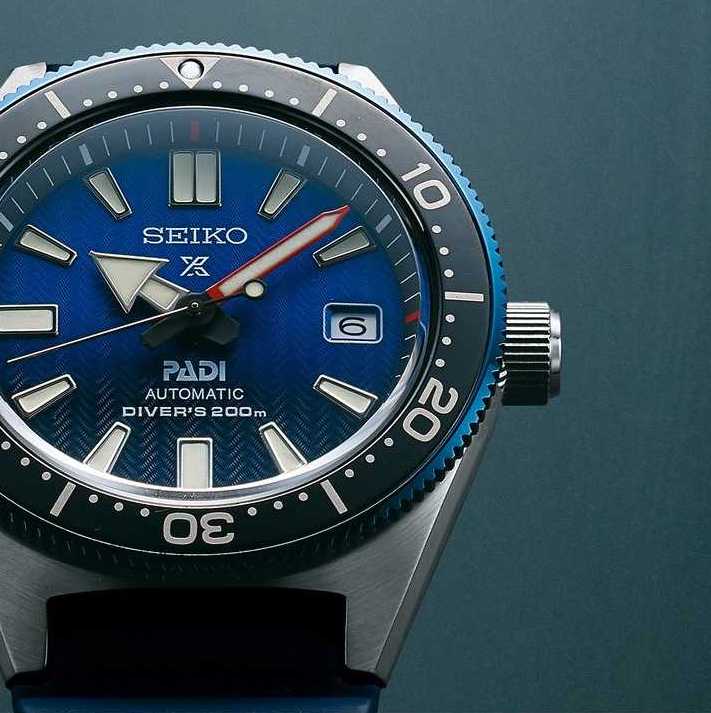
Top 20 Facts About Seiko – Interesting Things to Know
Seiko is one of the largest watch companies in the world. It is known all over the world and appreciated by all types of people of different ages and with different styles and purposes. Seiko is a company with a long and interesting history and the fact that Seiko is one of the largest watch companies in the world didn’t happen overnight. The road to success was long and met lots of challenges along the way.
Seiko is most known for making high-quality wristwatches for affordable prices. Their watches are appreciated for the superb relationship between price and quality. If you’re looking for an affordable, high-quality timepiece that you can wear and enjoy without breaking the bank, then Seiko is the perfect option.
Are you looking to learn more about Seiko and what the company is all about? In this article, we’re taking a look at interesting facts about Seiko, its history, and its watches.
Top interesting facts about Seiko watches
1. The name means “precise” in Japanese
In 1892, the Seiko founder Kintaro Hattori opened his very own factory which he named Seikosha. The name aligns well with a watch manufacturer striving to make high-quality wristwatches with great accuracy and so the Seiko name we know today actually comes from the name of the factory. The name was shortened for the watch brand to make it more memorable and to look better on a watch dial.
2. The Seiko founder was only 21 years old when he opened up his first watch shop
21 years of age, the Seiko founder Kintaro Hattori opened up the K. Hattori watch and clock shop in Tokyo’s Kyobashi district. He began building and repairing watches and clocks. This is what would become the starting point for Seiko and eventually starting his own watch brand named Seiko.
3. Seikosha released its first pocket watch in 1895
Hattori launched his first pocket watch called Timekeeper in 1895. This was a 54.9mm socket watch with a silver case, powered by a 22-ligne movement imported from Switzerland.
Despite only focusing on the Japanese market at the time, he used English for the model as he saw an opportunity to expand his business with watch exports.
4. The first TV advertisement for Seiko was aired in 1953
Building the company, Seiko started to advertise its watches. The first television advertisement for Seiko was broadcasted in Japan in 1953. The advertisement promoted the Seiko Comet Flower Clock.
5. Seiko created the world’s first quartz wristwatch
Seiko essentially invented quartz technology in wristwatches and launched the world’s first quartz wristwatch – the Quartz-Astron 35SQ . Seiko launched the model in December 1969.
To celebrate this remarkable achievement, Seiko fitted the new quartz mechanism inside a gold case.

6. Seiko released the first electronic paper watch
In 2006, Seiko released the world’s first electronic paper watch with the name Spectrum. This watch features e-ink (electronic ink) and has an LCD screen that redraws itself. The benefit of this is that it only uses power when it redraws and does not need constant energy or back-lighting.
7. Seiko was the official timekeeper for the 1964 Tokyo Summer Olympics
In 1964, Seiko was the official timekeeper for the 1964 Tokyo Summer Olympics. This led to the development of the world’s first quartz watch, the Astron.
For the Olympics, Seiko created 36 different timing models and 1278 instruments. One of which was a touch-pad timer for swimming, which also happened to be the world’s first. The technology used for this instrument is still used to this day and works when the swimmer puts their hand on the pad. The pad is designed to ignore water splashes and only react to the touch of the swimmer.
8. The first Grand Seiko was created in 1960
Grand Seiko is a sub-brand of Seiko that focuses on making high-quality, exclusive, and luxury timepieces.
Today, Grand Seiko watches are appreciated for their impressive finishing and attention to detail and are considered a true luxury watch brand.
The story of this sub-brand begins in December 1960 when Seiko launched the first Grand Seiko watch. The watch was powered by a caliber 3180 with an accuracy of +12 to -3 seconds per day with a power reserve of 45 hours. This was the first watch to be made in Japan to meet the requirements of Bureaux Officiels de Contrôle de la Marche des Montres’ level of excellence. This is the Official Swiss Chronometer Testing Institute which tests the precision and accuracy of Swiss timepieces. With this approval, Seiko could prove that Japanese watches could be just as good as Swiss watches.
9. Seiko created King Seiko in 1961
One year after launching the Grand Seiko in 1960, Seiko launched King Seiko, produced by Daini Seikosha. The purpose of King Seiko watches was to create the best timepieces Seiko had ever created. This led to an internal rivalry between the two sister brands Grand Seiko and King Seiko.
Grand Seiko won in the end and King Seiko was merged with the rest of the company. But Seiko still makes the King Seiko under the Seiko name today.
10. In 1966, Seiko beat the Swiss with a self-winding watch
Seiko released the Seiko Sportsmatic 5 in 1963. You are probably familiar with the Seiko 5 today as it is one of the most popular watches in Seiko’s collection. This was the original that laid the foundation for the Seiko 5 we know today.
The Seiko Sportsmatic 5 was a self-winding watch that displayed the date and day, and was water-resistant. Upon its launch, it was a great success. This success was further boosted by Seiko’s role as the official timekeeper for the Tokyo Olympics.
The result was that in 1966, the exports of Seiko 5s from Japan exceeded the total number of self-winding watches that were produced that year in Switzerland.

11. Seiko recognized the future of wristwatches early on
Whilst Hattori focused on wall clocks and pocket watches, he paid attention to the growing interest and demand for wristwatches and therefore decided to jump on board with the trend. In 1913, he released the Laurel which was a wristwatch featuring a silver case that measured 29.6 mm in diameter. This wristwatch can be described as Seiko’s first wristwatch and was designed with a porcelain enamel dial, and powered by a 12-ligne movement.
Because Seiko needed to import components, in particular, related to the movement, the production of watches was initially slow but two central parts of this were resolved in 1910 and 1913 when Seiko started producing its own balance springs and enamel dials respectively.
12. The Seikosha factory was destroyed after the Great Kanto Earthquake in 1923
The earthquake put a halt to production but Hattori did not let this stop him. Rebuilding everything was extremely expensive but Hattori was determined to do so. About one year later, they were back on track and started producing watches again.
13. The first watch with the “Seiko” branding on the dial was launched in 1923
Hattori did not start to use the Seiko name immediately in its production. But in 1923, he launched the first watch bearing the Seiko name on the dial, which was an abbreviation for “Seikosha”, the factory.
The first Seiko wristwatch had a 24.2mm case made of nickel and was powered by a 9-ligne 7-jewel movement with a small seconds sub-dial.
14. Seiko launched its entirely-in-house made movement made from scratch in 1956
In 1956, Seiko launched – for the first time ever – a movement made entirely from scratch using solely in-house-made parts.
This was a movement that was made entirely from scratch without being inspired by Swiss movements or that used externally-sourced parts. For Seiko, it was a huge feat as it proved that Seiko was a watchmaker to rely on, one that had the proper expertise and know-how about watchmaking.
The movement that Seiko launched was 26mm in diameter and incorporated a Diashock shock absorption system, entirely invented by Seiko. It was known as Seiko Marvel and was in production until 1959.

15. Grand Seiko invented the torque return system
The torque return system is a clever system for unused energy.
The issue with mechanical watches is that when a mainspring is fully wound and discharges, there is an excess torque involved which leads to loss of efficiency. In fact, almost 30% of the energy that is used does not contribute to the watch’s performance. Seiko’s clever torque return system was therefore developed to recover energy to wind the mainspring again instead of wasting it. The result is a longer power reserve!
16. Seiko VS Grand Seiko
Grand Seiko is a sub-brand of Seiko that wasn’t developed until 1960 and Seiko watches were in production long before that. Grand Seiko was established to create exceptionally high-quality timepieces that were able to compete with the quality of Swiss watches. The Grand Seiko would prove that it could go head-to-head with Swiss watchmakers and show the market that Japanese watches could also be associated with luxury and exceptional watchmaking craftsmanship.
Therefore, Grand Seiko is the high-end, luxury segment of Seiko watches. However, it’s important to distinguish these and not treat them as the same. Seiko focuses on making affordable watches that have good quality and exceptional value for money.
Grand Seiko, on the other hand, focuses on making exclusive, luxury timepieces with a focus on material, finish, and performance. But this also comes at a price and they are not affordable.
17. Seiko created the world’s first LCD TV watch in 1982
18. Seiko established the Micro Artist studio for Grand Seiko in the year 2000
In this studio, a group of highly experienced watch experts is found. Over the years, the micro artist studio has created several extremely important timepieces and inventions.
Most of the Grand Seiko watches are developed at Shizukuishi Studio in Iwate Prefecture and Shinshu Studio in Nagano Prefecture. But the Micro Artist studio focuses on the most complex and important creations that require skill and knowledge to develop. In setting up the studio, the legendary watchmaker Philippe Dufour helped the company with tips and advice for achieving perfect creations.

19. Grand Seiko uses Zaratsu polishing
Zaratsu polishing is synonymous with Grand Seiko watches. This is a special polishing technique that is used to achieve perfectly flat and smooth surfaces with a mirror polish. The operation involves a machine but requires skilled craftsmen to perform the task. In order to be allowed to make the Zaratsu polish, Seiko craftsmen must go through five years of Zaratsu training before working on cases that will go on to be sold.
20. Seiko invented the Spring Drive movement in 1999
Understandably, the Spring Drive movement was a great success upon its launch. It was the result of 28 years of research and development. In developing the Spring Drive, Seiko created more than 600 prototypes.
The Spring Drive movement is 95% mechanical and is powered by a traditional mainspring that you can find in any mechanical watch. The difference is that it uses an oscillating quartz crystal to provide exceptional accuracy. The result is essentially a quartz watch with the signature sweeping seconds hand of a mechanical watch. Basically the best of both worlds – the accuracy of quartz and the appeal and craftsmanship of a mechanical movement.




